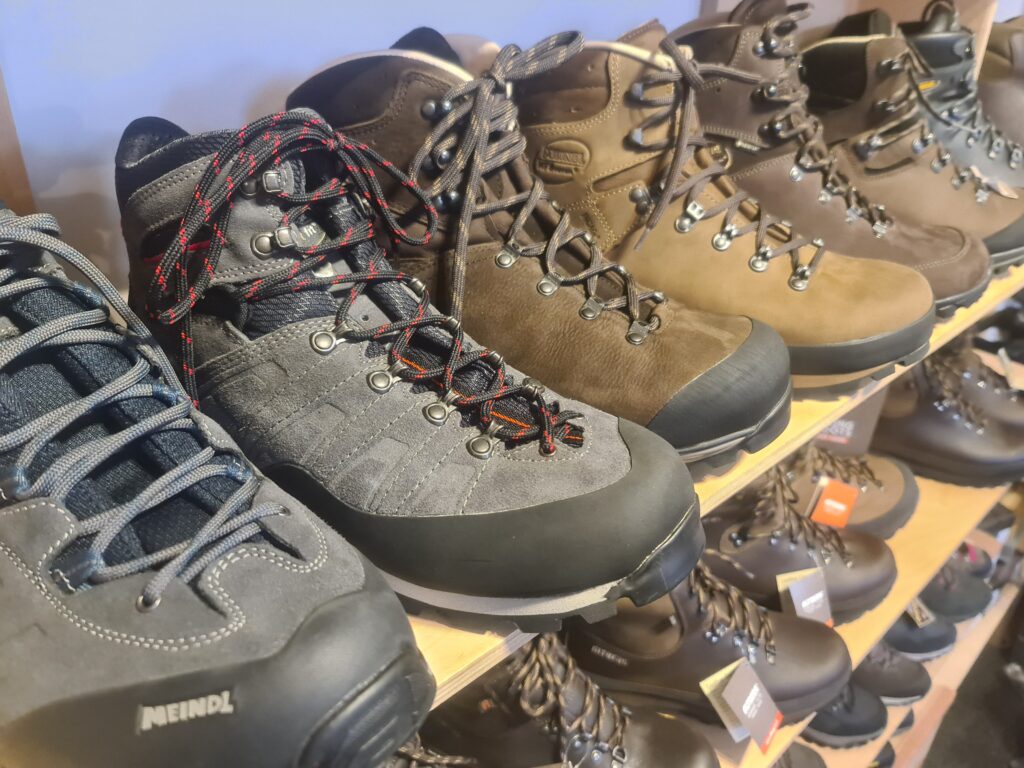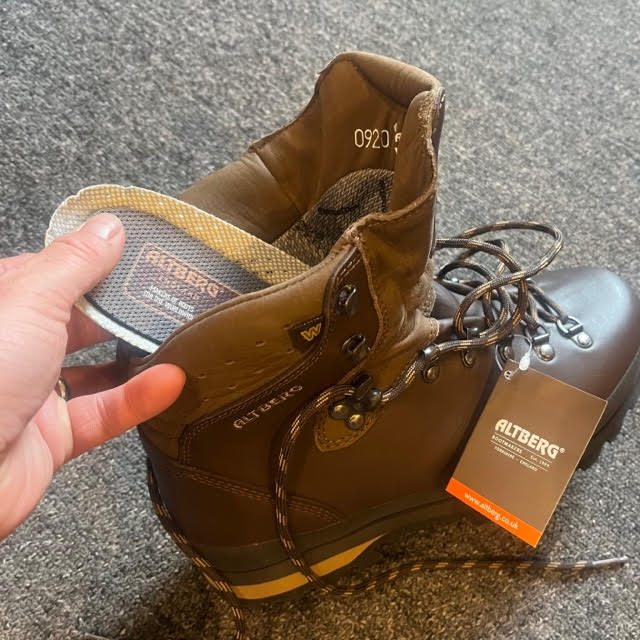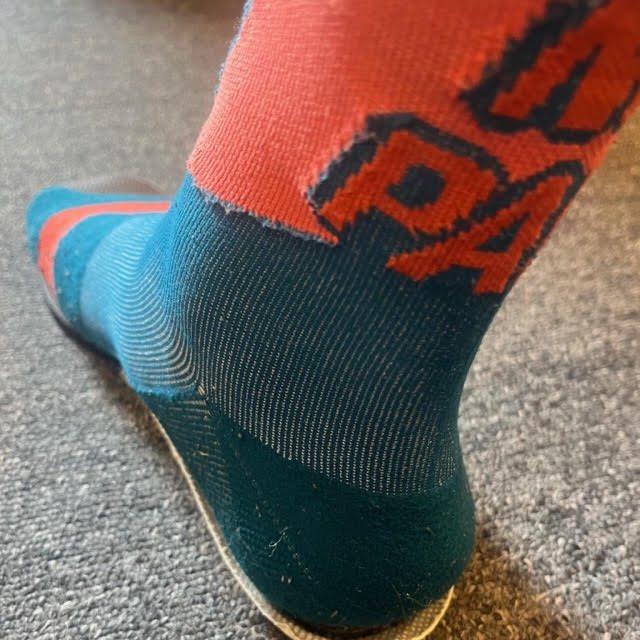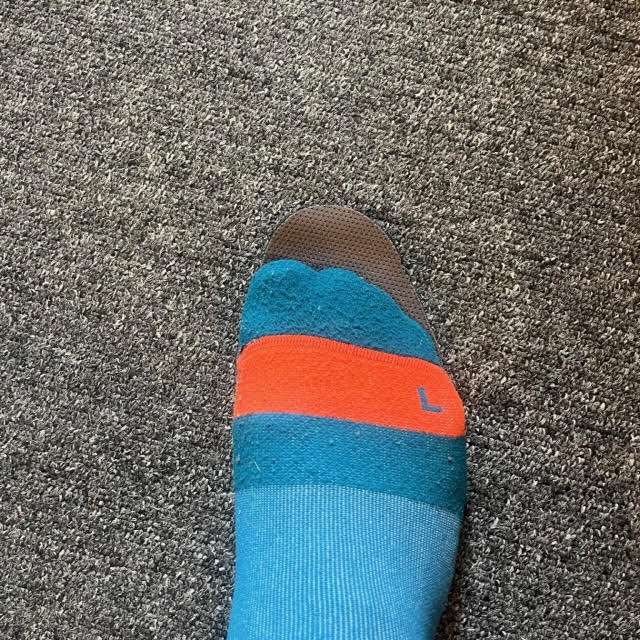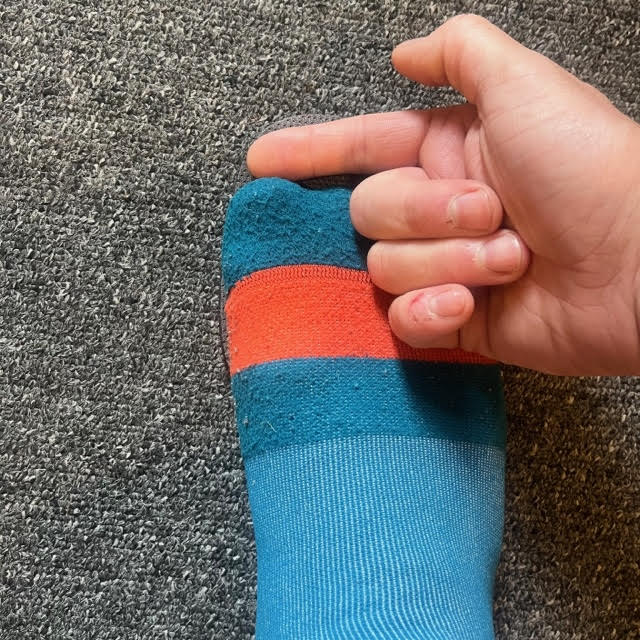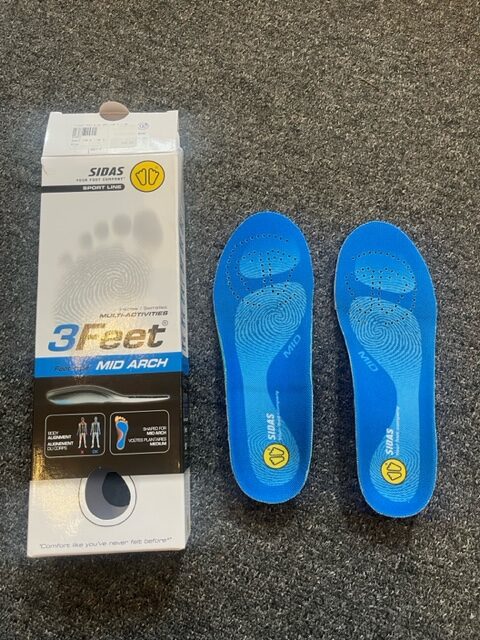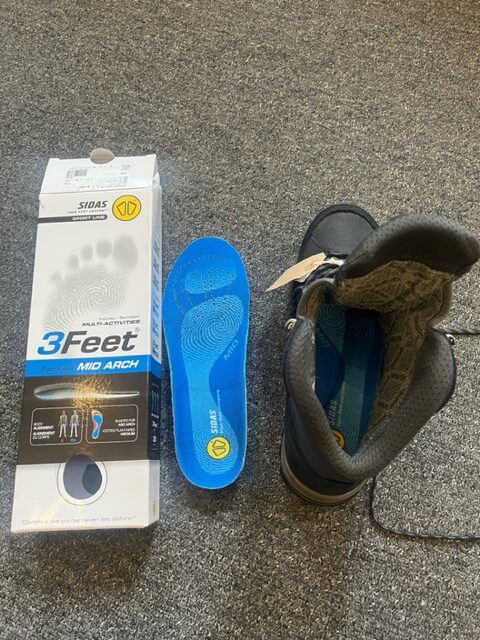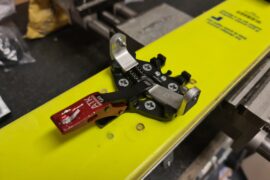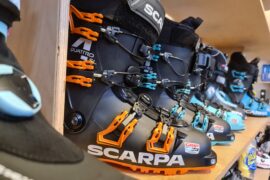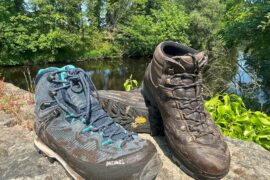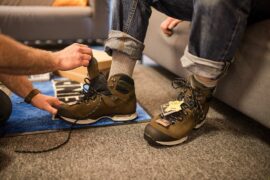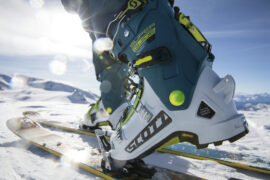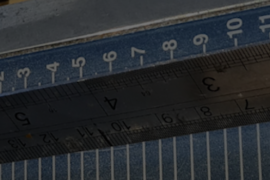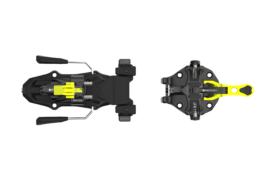This is a short article on what to expect when you receive your brand new walking boots.
So you’ve taken the plunge and bought a pair of walking boots or shoes online from us. We would always recommend spending a bit of time trying the footwear around the house first before you decide if you are happy or not, there are a few things to look out for.
The most important thing to get right is the length, If you’ve already used our how to measure your feet guide you should have ordered the correct size. All brands are different though with some coming up long for size and others a little bit small so it’s worth doing the checks below.
If you haven’t or you want a good quick length check we recommend taking the footbeds/insoles out of the footwear and standing on them. Make sure your heels are in the right spot (just forward of the back of the insole) and then look at the toes. Can you see any of the footbed extending beyond the end of your longest toe? We recommend about a fingers width of space in order to give your toes wriggle room when walking downhill. You don’t need to be touching the end of a walking boot very hard at all to bruise the toe nails so you need to be very careful at this stage.
It’s worth noting that this check is only relevant for checking the length not the width. The insole sits in the very bottom of the boot and the upper is quite a bit wider than this so if the insole is wider than your foot I would expect the boot to be too roomy.
The next most important aspect of the fitting to consider is the heel hold. Ideally when walking around the heel should be held securely within the heel cup with minimal vertical movement. The best way to test is to stand on an uphill slope and walk on the spot making sure to stand up on your toes so the sole of he boot lifts at the heel. You can also test the heel hold on a step or stairs, standing on the edge of the step on your toes and lifting and lowering the heels of the boot. If while performing this test you feel you are getting excessive heel lift try adjusting the laces and doing the test again. Excessive heel lift is hard to quantify and bear in mind that even in a well fitting pair of boots you will always be able to force some heel lift but if you feel that there is sufficient movement up and down that would cause or contribute to blistering then that would be considered excessive. If there is any lateral movement in the heel then we would say that the boot is too wide in the heel cup for you and should be returned. We would expect a small amount of heel movement in any boot particularly stiffer boots but this will often improve as the boots wear in and become a little more flexible.
The width is the next thing to think about while wandering around in your new boots. The ideal width of a walking boot or shoe really comes down to personal preference. Some people like their boots to be very snug and some people barely want the boot to be touching their feet at all! Personally I think the boot should be snug enough that the feet feel held but not squashed. The forefoot should be relaxed and you should feel that your feet are flat on the footbed. It’s OK if your toes are bunched together but they shouldn’t feel like they are squeezed or rubbing together. If the boot is too wide there will be lateral movement within the boot which should be avoided in most cases.
The internal volume of the boot is the next thing to consider. This is different to width but as a general rule, most of the wide fitting footwear is also high volume or deep. If the boot or shoe is too high in volume you may feel like it is just too big. It is quite difficult to differentiate between too wide or too high in volume. I would say if the boot feels like there is space above your toes of forefoot or there is space around your instep when laced up properly then the boot may be too high in volume. A common symptom of this is a feeling that the boot is folding or creasing and digging into your foot as you flex the forefoot. There are ways to reduce the volume within a shoe or boot so it may not be the case that if the boot is a little roomy it is wrong. If everything else feel great it is probably worth looking at adding a different footbed or volume reducer.
A volume reducer is just a thin piece of firm foam that goes under the standard footbed and reduces the volume throughout the entire length of the boot, partial volume reducers can also be made if there is too much volume in either the heel area or forefoot.
We would recommend an arch support footbed to most customers, they help a large percentage of people. They reduce elongation when weighted and the amount the foot rolls within the boot. Generally they support the foot much better than the standard ones and hold the foot in a better position. In most cases the supportive footbed will be a bit more substantial than the standard one which it will replace so usually the boot will feel a little snugger.
That’s it ! If you are happy with all of the previously mentioned fit aspects all that is left to check is that there are no points of pressure when walking around normally. A few common ones to look out for are the pleats in the tongue forming a hard lump that digs in to the lower leg or the top of the cuff digging in to the leg (or ankle bone if you are trying a shoe).
We are more than happy to talk to you about any of this if you are worried about anything once you have the boots or shoes at home. There may be a solution that we can come up with that solves whatever problem it is without the need to send the footwear back.
